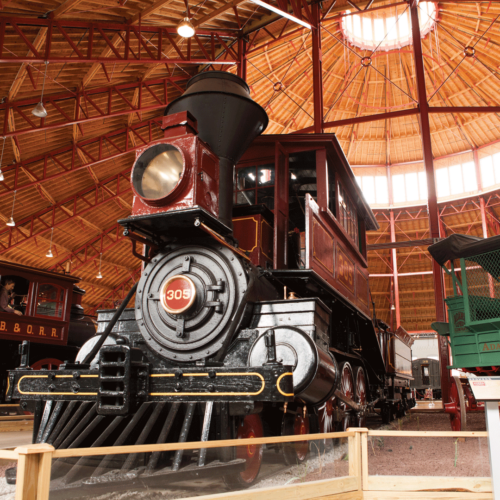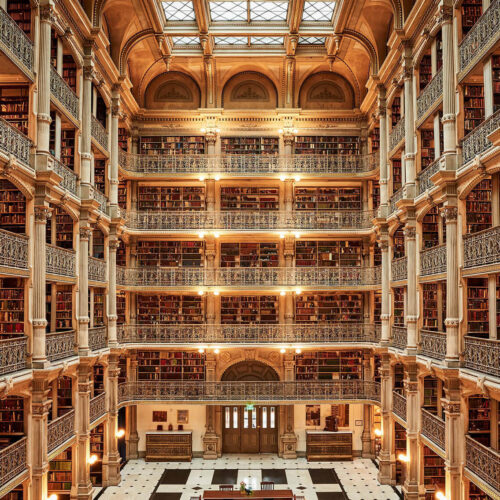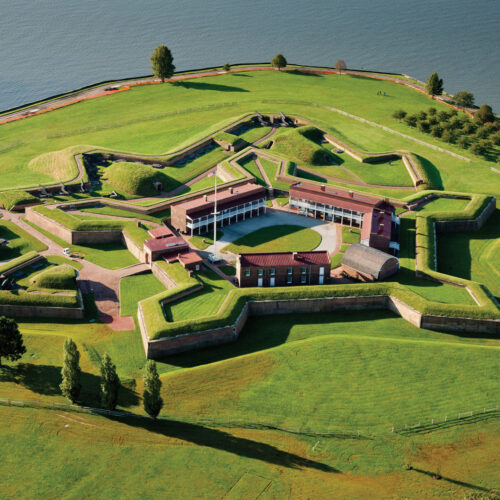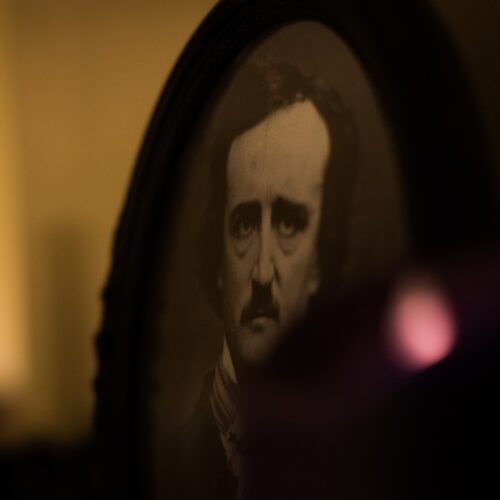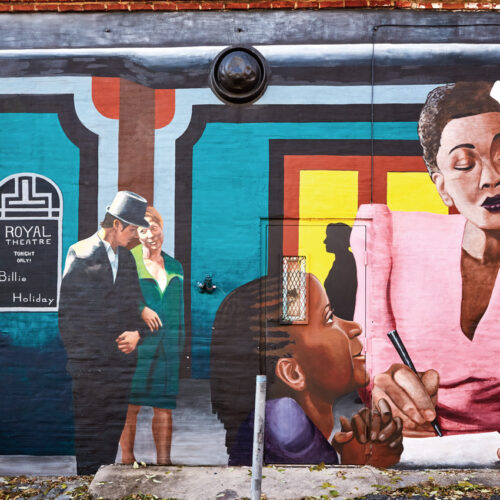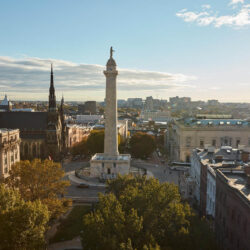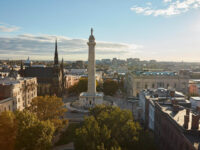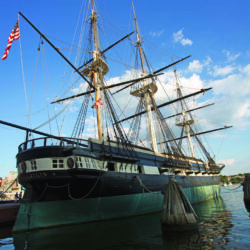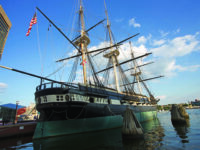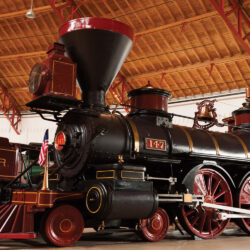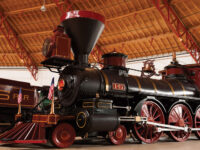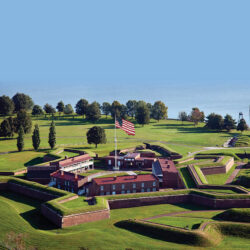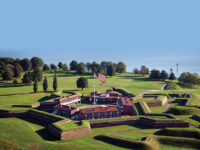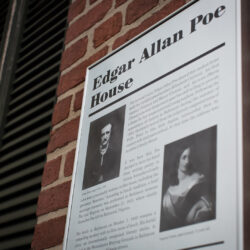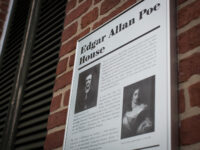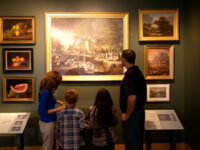Can’t-Miss Baltimore Historic Sites
Discover the history of Charm City at these noteworthy museums, homes, ships and monuments.
Baltimore’s history has been shaping America for centuries. From memorable moments like the writing of the “Star-Spangled Banner” at Fort Henry and the establishment of the commercial railroad, to the legendary people that roamed our streets like Edgar Allan Poe and Frederick Douglass. Discover the people, places and things that have shaped Baltimore’s legacy at these historic sites.
Memorable People
Babe Ruth Birthplace & Museum
George Herman “Babe” Ruth was born in Baltimore in 1895 and recruited to play for the Orioles in 1914. It was here that Ruth got the famous nickname from his teammates. His boyhood home stands just steps from Camden Yards, now used as a museum. Follow the 60 painted baseballs on the sidewalk to 216 Emory Street where you’ll find the Babe Ruth Birthplace and Museum, complete with memorabilia from his childhood and career.
Edgar Allan Poe House & Museum
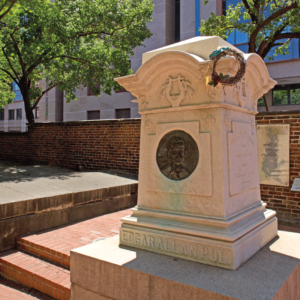
A photograph of Edgar Allen Poe’s grave in Baltimore.
Visit the Edgar Allan Poe House and Museum in the home he lived in from 1832 to 1835 and to learn more about the famed macabre writer. Nearby, Poe’s body rests at the historic Westminster Hall & Burying Ground.
Fredrick Douglass-Isaac Myers Maritime Park Museum
The first African American-owned shipyard in the United States, and now an African American heritage site, is the site of the Frederick Douglass-Isaac Myers Maritime Park Museum. The museum celebrates the life of Frederick Douglass, a Maryland native who worked as a shipbuilder in Fell’s Point before becoming a national leader in abolition.
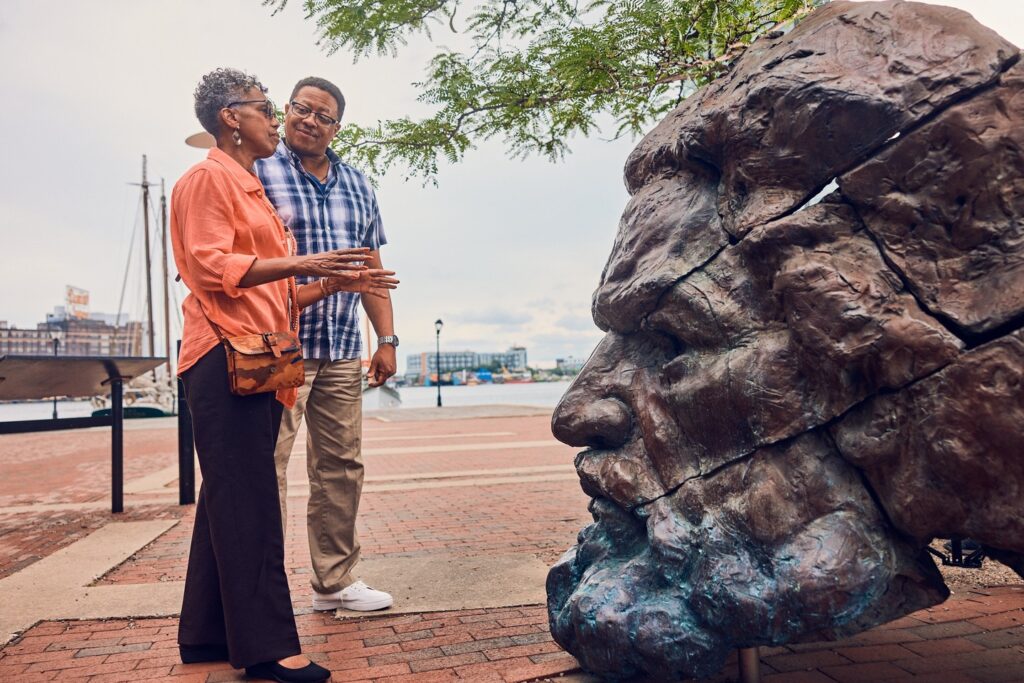
The Douglass bust sits outside the Frederick Douglass-Isaac Meyers Maritime Park Museum in Fell’s Point.
Jewish Museum of Maryland
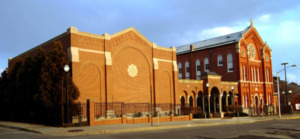 The Jewish Museum of Maryland, located between the historic Lloyd Street and B’nai Israel Synagogues, chronicles the life of Jewish Americans in the Maryland region throughout history with changing exhibits, galleries and events.
The Jewish Museum of Maryland, located between the historic Lloyd Street and B’nai Israel Synagogues, chronicles the life of Jewish Americans in the Maryland region throughout history with changing exhibits, galleries and events.
H.L. Mencken House
The H.L. Mencken House is dedicated to the life and legacy of the literary great known as the “Sage of Baltimore” and who reported for the Baltimore Sun. Located in the three-story, Italianate rowhouse that Mencken lived in for most of his life, this museum commemorates his achievements, including the publication of a myriad of essays and a three-volume study called “The American Language.”
The National Great Blacks In Wax Museum
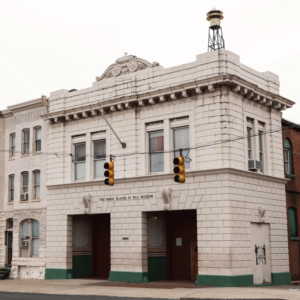
Exterior of the Great Blacks in Wax Museum in historic Jonestown.
America’s first wax museum of African American history and culture, the National Great Blacks In Wax Museum features more than 150 lifelike wax figures of influential African Americans such as Thurgood Marshall, Harriet Tubman and Jackie Robinson. The exhibits allow you to experience what it was like during the “Middle Passage” of the slave trade, traveling along the underground railroad and fighting for civil rights.
Significant Places
Fort McHenry National Monument and Historic Shrine
During the War of 1812, Fort McHenry was instrumental in the defense of Baltimore against British attack, a victory that inspired Francis Scott Key to put pen to paper and write the national anthem. If you want to learn more, head to Fort McHenry for the full story plus so much more. You can even help raise or lower the flag that flies over the fort each day.

Fort McHenry is a great place to spend a sunny day in Charm City!
Maryland Center for History and Culture
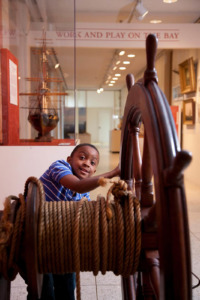
You can’t miss the Maryland Center for History and Culture thanks to the giant statue of Nipper the RCA dog on the roof. Inside is the largest collection of Maryland history documenting life from pre-settlement days through the present. The most prized item in the museum’s collection is the original, hand-written manuscript of Francis Scott Key’s “The Star-Spangled Banner.”
Reginald F. Lewis Museum of Maryland African American History & Culture
Touted as the “authentic voice of African American history and culture,” this Smithsonian affiliate features over 13,000 square feet of permanent and temporary exhibition space holding about 10,000 objects. Past exhibitions at the Reginald F. Lewis Museum have included works by Jacob Lawrence, an installation on Black superheroes and a presentation on the depiction of African American women. The Lewis Museum also hosts discussions, film screenings and living history performances.
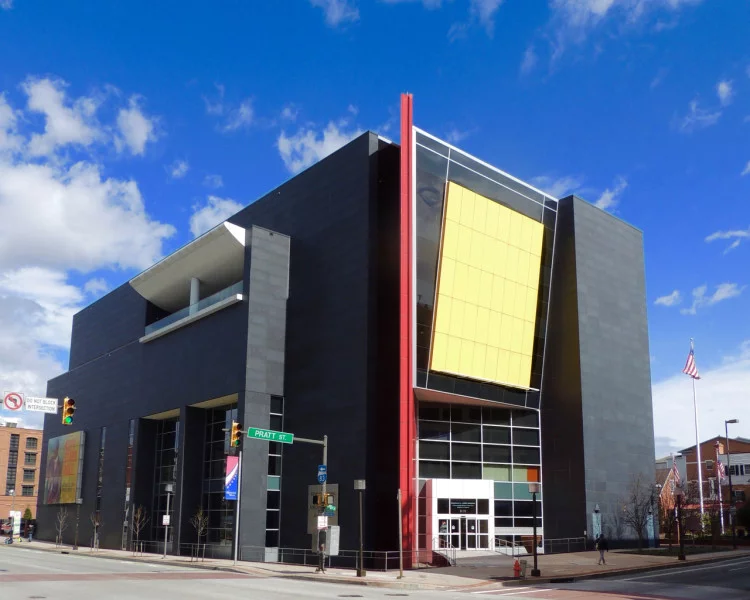
Rotating exhibits at the Lewis Museum explore the experiences of modern-day African Americans. Permanent exhibits trace history from slavery to segregation.
Washington Monument
Tour the inside of the first monument dedicated to George Washington (Yes, before the one in D.C.) and learn about its history with interactive touch screens at the base. Climb the 227 stairs to the top for a panoramic view of Baltimore from the Washington Monument.
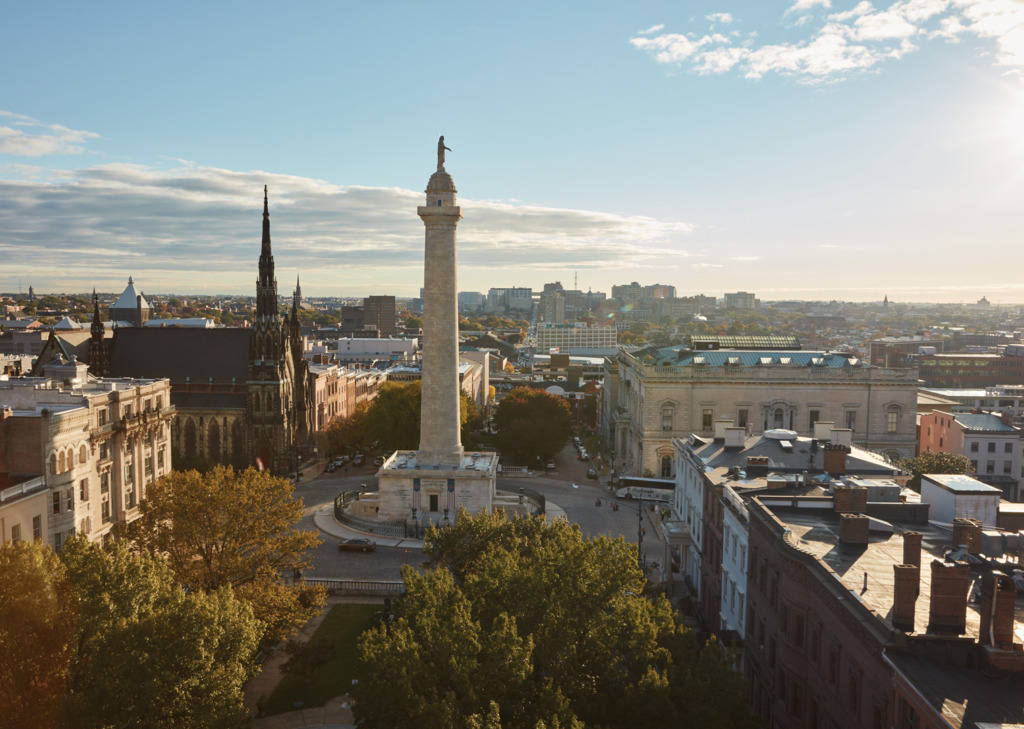
The Washington Monument is in the heart of Mount Vernon.
Extraordinary Things
B&O Railroad Museum
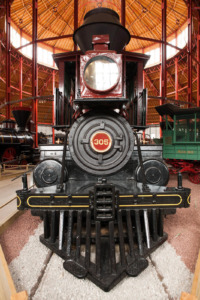
Ride a train along the first mile and a half stretch of track laid in America at The Baltimore and Ohio (B&O) Railroad Museum, which also has the oldest collection of rolling stock in America—from locomotives to old freight cars to passenger cars. The museum is also a designated Underground Railroad historic site and has an exhibition recounting the journeys of 27 individuals who sought freedom from slavery along the B&O.
Baltimore Museum of Industry
The Baltimore Museum of Industry is located in a former waterfront oyster cannery from the early 20th century. It’s home to the Baltimore, the oldest surviving steam tugboat in the United States and the original spice grinder brought over from Germany by Gustav Brunn, the inventor of Baltimore’s favorite spice, Old Bay. The museum celebrates the industrial history of the city and the innovative spirit of the industry worker, past and present, through immersive exhibitions, educational programs, hands-on activities, tours and demonstrations.

There’s so much to see and discover at the Baltimore Museum of Industry, which also boasts a wonderful view of the water.
Historic Ships
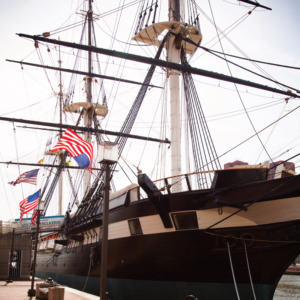
The USS Constellation, part of Historic Ships in Baltimore.
Learn about Baltimore’s maritime history on one of the Historic Ships in Baltimore’s floating museums. Four vessels and one lighthouse placed around the Inner Harbor each contain information and artifacts from a different era.
The Star-Spangled Banner Flag House
At the Star-Spangled Banner Flag House in Jonestown, step into the home where Mary Pickersgill sewed the garrison flag that inspired Francis Scott Key to write “The Star-Spangled Banner.” You can experience what it was like to cook in a replica of Pickersgill’s kitchen and learn about life in 1812.
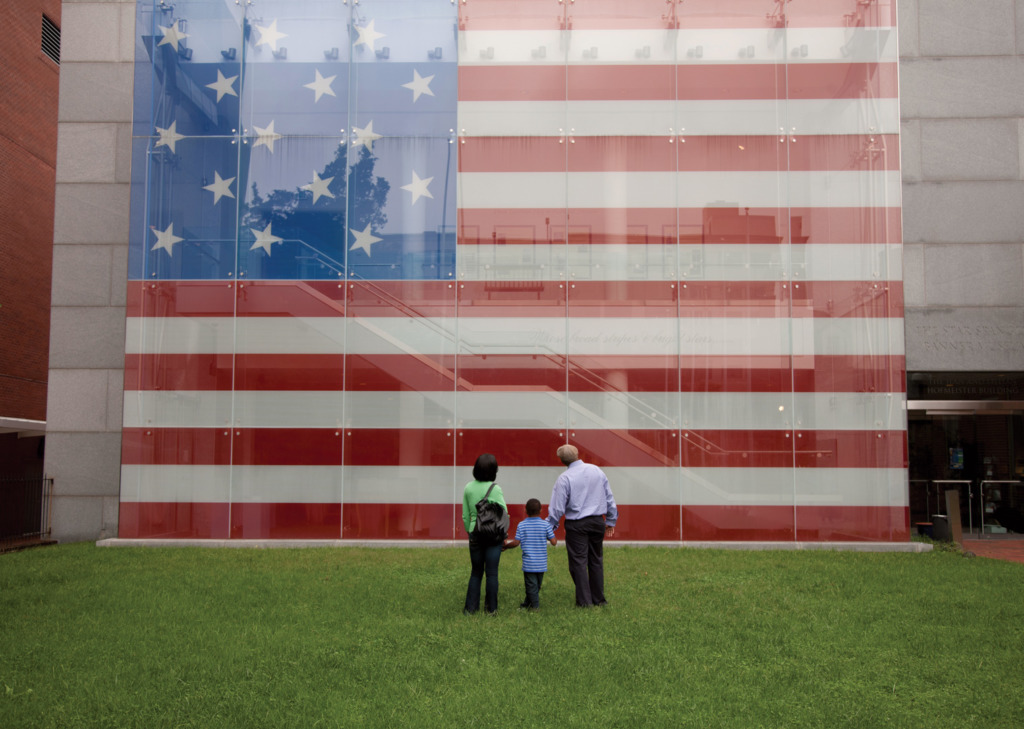
The Star-Spangled Banner Flag House displays the design of the flag Mary Pickersgill sewed, with 15 stars and 15 stripes.


